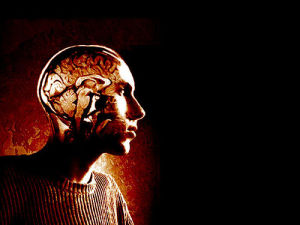Today’s Temporary Changes Become Tomorrow’s New Traits
 The more you recognize, dis-identify with, and disengage from your acts, the less frequently you will go into them. I found this to be true without realizing the neurological process that supports it.
The more you recognize, dis-identify with, and disengage from your acts, the less frequently you will go into them. I found this to be true without realizing the neurological process that supports it.
Research on the brain has demonstrated that all of the changes we make through mindful awareness, which at first are temporary, lead to new traits, new ways of behaving, by changing the brain. Mindlessly doing the same things, such as automatically going into your acts, reinforces your existing neural firing patterns, which keeps your behavior the same as it’s always been. As Siegel explains, mindful awareness (“using your intention to pay attention”) “gives rise to changes in the way [you] live.” Indeed, through mindful awareness, you “sculpt” your brain toward mental health.
Again, the reason this is possible is because our brain is malleable, or neuroplastic. The good news, then, is that as sculptors of our own brain, we are not working with a hard substance like marble. When a sculptor cuts away the stone, that piece of marble is gone. From that point on, the sculptor is stuck with the marble statue as it is, regardless of whether the sculptor likes the way it looks after he or she has chiseled it.
But the brain is not marble; it is malleable, like clay. The neural pathways of our wiring are not carved in stone; they are in our neuroplastic brain, which means that if we don’t like the way a neural pathway was formed at a particular fork in the road of our life, we don’t have to live with that particular cut from that point on. When our old hardwiring triggers our fixed identity and its acts, and we realize that they are working against us rather than for us, we can create new neural pathways that will allow us to be in the present and to act authentically and appropriately. The only tool we need is mindful awareness.
Siegel describes five qualities associated with mindful awareness, and I see these as the antithesis of, and the antidote to, our fixed identity and its acts. The acronym he provides for these qualities is FACES:
F = flexible
A = adaptive
C = coherent
E = energized
S = stable
And Siegel uses these terms in very specific ways: Being flexible means that you can take in information about a situation in the present, give yourself time to reflect, and make a choice about how to respond appropriately. Being adaptive (which flexibility opens the door to and enhances) means having the capacity to cope in a healthy way with new situations as well as changes in old situations. Being coherent means feeling connected to yourself and other people, open, harmonious, and engaged with and receptive to life. It gives you a sense that life is always new and of inner knowing, compassion and empathy. (“Coherence,” Siegel says, “in many ways describes well-being.”) Being energized means that the energy that gives you the capacity to authentically engage in life is abundantly available and moves without blockages. Being stable means that, although you may react at times in a way that’s more automatic than mindful, you return to a state of emotional equilibrium.
Focusing on these beneficial qualities—the ability to be flexible, adaptive, coherent, energized, and stable—reminds you why you’re working to recognize, dis-identity with, and disengage from your acts. Your acts prevent you from incorporating these qualities in your responses to the world. Indeed, your acts make you the polar opposite: inflexible, nonadaptive, incoherent, unenergized, and unstable. When you are in an act, you are not connected to yourself or to others, and you are unreceptive. Your acts block energy. A shorthand way of saying all of this is that your acts are your machinery’s personas that keep you stuck.
The crucial point to remember is that, as with the voice in your head, the acts are not you; they are just a construct of your machinery’s programming in response to fears that arose in earlier situations. They keep you in the past and cost you aliveness and joy. They keep you out of touch with your being, with your true feelings, with your sense of connectedness to yourself, to others, to Higher Power. When you are into your acts you are really not present; you’re just in your machinery, being run by your programming.
By using mindful awareness to recognize your behavior and to dis-identify with and disengage from your acts, you are creating new neural pathways with the ultimate effect of remodeling your brain and transforming yourself and your experience of life!
An excerpt from my recent book, Your Mind Is What Your Brain Does for a Living, now available at Amazon (http://amzn.to/1fekgI3).
photo credit: Andrew Mason via photopin cc
- 6 Oct, 2014
- Posted by Steve Fogel
- 0 Comments



COMMENTS